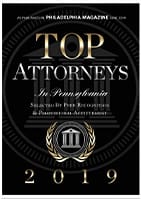For employers, protecting valuable businesses resources from competitors is critical to ensuring the success of the business. Valuable resources include not only intellectual property created by the company, but also trade secrets and employees, particularly high-level employees who have access to sensitive company information.
Protecting intellectual property includes not only registering trademarks, patents, and copyrights for intellectual property to lay claim to the creation, but also defending these intellectual property rights when they are threatened.
Most people are generally familiar with trademarks, which establish a party’s exclusive right to words, symbols or designs which specifically differentiate goods and services provided by one source from those provided by another. Trademarks are established by actual use. Not all trademarks need to be registered, but those which are do not expire as long as the proper documents are filed and fees are regularly paid.
Copyright protection covers original works of authorship. The length of time a copyright is effective depends on whether the work is in the author’s name, anonymous, pseudonymous or for hire. Patents protect the patent holder’s rights to an invention which is disclosed to the public, and last either 15 or 20 years, depending on the type of patent taken out. Patent durations may be extended or adjusted in some circumstances.
Patents are particularly important, of course, in the technology industry, where product innovation is highly valued and there is fierce competition for market share. For these businesses, defending intellectual property rights, both by enforcing them in court and coming up with an effective strategy for procuring licensing agreements, is particularly important.
In our next post, we’ll look a bit at other strategies companies can use to protect sensitive and valuable business information and resources, including trade secret protection and restrictive covenants or non compete agreements.
Source: USTPO.gov, “Trademark, Patent, or Copyright?,” Accessed March 31, 2017.



